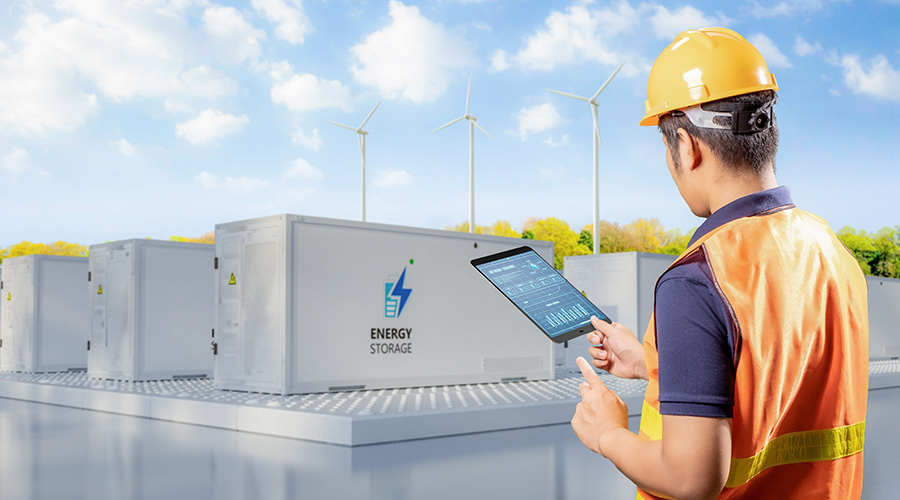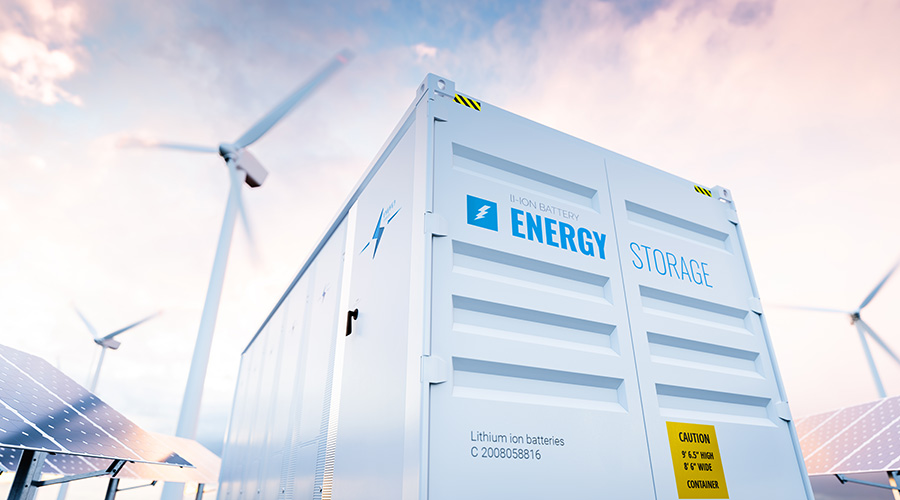How Batteries Are Powering the Future of Resilient, Reliable Energy
Beyond energy storage, batteries offer benefits such as frequency regulation and rapid management of load-generation imbalances
Batteries offer the grid other benefits besides energy storage. Because of their fast response times, batteries are ideal for balancing very short-term differences in supply and demand, such as frequency regulation and rapidly managing load-generation imbalances.
“Mission-critical facilities such as hospitals, data centers and factories need a constant source of 100 percent reliable energy to run and power their equipment,” says David Borchardt, P.E., senior mechanical engineer, for MD Energy Advisors. “Therefore, batteries act as a buffer for the time it takes emergency generators to start producing power.”
Further, he says that batteries and other equipment can ensure a facility's power supply is “clean” as momentary spikes, surges, sags, or outages can harm electric equipment.
BESS equipment can also increase power resiliency for commercial and institutional building owners, says Fluegeman.
“Battery storage cannot yet fully replace standby or emergency backup power generators, largely due to their limited runtime of plus or minus four hours,” he says. “Generators typically include at least 24 hours of onsite fuel runtime with easy refueling or operating from the natural gas utility.”
In 2022, 60 percent of our nation’s electricity was generated from burning fossil fuels, mainly coal and natural gas, according to the U.S. Energy Information Administration.
Renewable energy, particularly solar and wind, has become as affordable as — or often cheaper than — traditional fossil fuels but remains dependent on the time of day. Thus, energy storage is the key hurdle to making renewables fully reliable — finding efficient ways to store excess power when sunlight and wind are unavailable or during peak energy usage periods when energy is most expensive.
Solving this challenge is crucial for a sustainable, grid-independent future.
Shifting energy priorities
As the country’s energy policy shifts toward oil, gas and coal production, how will energy storage technology fare under new federal policies?
“While priorities are shifting away from some particular sources of renewable energy and toward other technologies like natural gas or even those with longer lead times, like nuclear or geothermal power, it’s clear that we will need a balance of multiple sources of generation to meet America’s growing energy demands,” says Robert Anderson, senior vice president of Energy Advisory Services for JLL. “It’s a great time for organizations with large energy demands or those concerned about grid reliability to think about the potential benefits of ‘behind-the-meter’ solutions for their own needs, including on-site energy such as solar or gas or demand management solutions like battery storage or microgrids.”
According to Patrick Hughes, senior vice president of Strategy, Technical, and Industry Affairs for the National Electrical Manufacturers Association (NEMA), growing energy independence is another key driver for expanding energy storage systems and technologies.
“Key energy tax incentives found within the 2022 Inflation Reduction Act have offered consistent policies for renewable energy and storage developers and helped the BESS industry by establishing energy tax credit structures,” Hughes says. “These tax credits have laid the groundwork for innovation and expansion of energy storage systems and technologies.”
What are the next steps for the industry?
“Policymakers will continue to refine and create standards that foster cost-effective energy storage solutions while enhancing system performance, grid reliability, and environmental stewardship,” Hughes says. “These developments are essential for accelerating the widespread adoption of battery storage technologies, contributing to cleaner, more resilient energy systems globally.”
Anderson says the introduction of artificial intelligence (AI) is one of the most exciting energy storage developments on the horizon.
“Incorporating AI into battery management systems enables more predictable maintenance schedules and reduces these costs through self-learning,” he says. “Customer energy demand changes could drive new value in flexible loads, where load shifting with BESS and similar ‘behind-the-meter’ technologies would be invaluable (both potentially as a revenue stream, as well as an energy-resilience play). This also supports the utility’s focus on grid stability while supporting decarbonization.”
Joel Williams is a freelance writer based in Frankfort, Illinois.
Related Topics:












